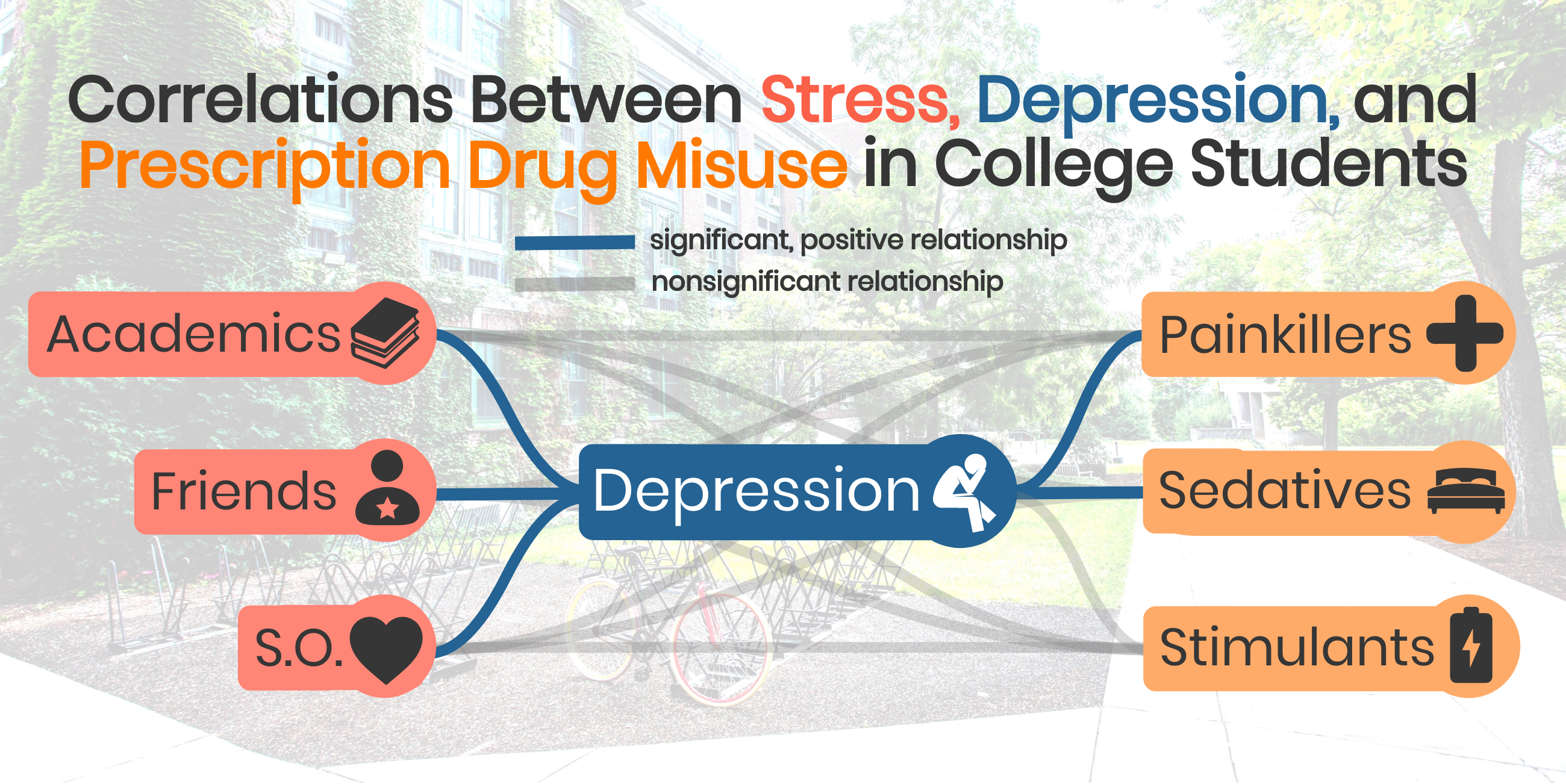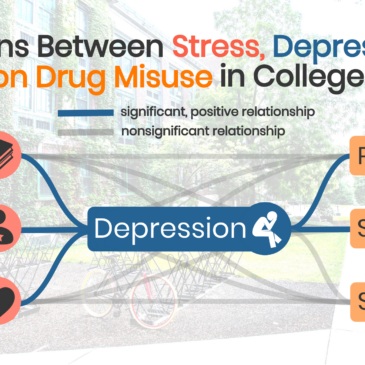Nonmedical prescription drug use is widespread across universities in the United States. In 2016, around one fifth of U.S. college students used prescription drugs non-medically, including painkillers, sedatives, and the most popular, stimulants; you might have heard of students using “study drugs” to enhance academic performance. Another possible reason for misusing prescriptions is college-related stress. Stress can cause depression, and students often turn to self-medication to cope. This week, STASH reviews a study by Margaret Pate and Riane Bolin that investigated the relationship between college-related stress, depression, and nonmedical prescription drug use.
What was the research question?
How are stress and depression related to nonmedical prescription drug use in college students?
What did the researchers do?
Pate & Bolin emailed a survey to 8,471 undergraduate students at a Virginia university that assessed prescription drug misuse, stress, and depression. The 918 respondents reported how many times in the past year they used painkillers, stimulants, and sedatives without a prescription, how much stress they currently felt from academics, friends, and significant others (S.O.), and how many depressive symptoms they experienced in the past two weeks. The researchers applied structural equation modeling to their data to test whether stress indirectly relates to nonmedical prescription drug use through depression.1
What did they find?
Eighteen percent of respondents used stimulants without a prescription at least once in the past year, and 11% used painkillers or sedatives without a prescription. Through structural equation modeling, the researchers found that increased levels of all three measured sources of stress (academic, friendship, S.O.) were significantly and positively associated with reporting more symptoms of depression, and that reporting more symptoms of depression was positively associated with increased nonprescription painkiller and sedative misuse, but not stimulant use. They found no direct relationship of stress to any form of nonmedical prescription drug use (see figure).

Figure. Results from Pate and Bolin’s structural equation model. Each line represents a correlational test conducted by the researchers. Click image to enlarge.
Why do these findings matter?
These results provide evidence that stress from college is related to depression, which in turn relates to increased nonmedical use of prescription painkillers and sedatives. Still, we know college students see nonmedical prescription drugs as more accessible and acceptable to use than other illicit substances, a common theme with nonmedical prescription drug use. To help them cope with negative emotions in an adaptive – rather than potentially harmful – way, students need access to the proper resources, including counseling services, specialized courses, and appropriately prescribed medication.
Every study has limitations. What are the limitations in this study?
It’s important to note that this study was cross-sectional; a longitudinal study could tell us more about which phenomena might be causing the others. Also, Pate & Bolin recruited a relatively small convenience sample, which could bias results and might not represent all U.S. college students or even the university sampled in this study. Self-reporting can bias results as well. Finally, stress was measured with three separate categories, but there are many other sources of stress for college students. Future research should consider a more nuanced approach to assessing this variable.
For more information:
Are you worried that you or someone you know has an addiction or mental health issue? The National Helpline is a free treatment and information service available 24/7. For more information, visit our Addiction Resources page. The Depression Center at the University of Michigan offers a list of methods for managing stress at school.
— Jamie Juviler
What do you think? Please use the comment link below to provide feedback on this article.
________________
[1] They controlled for past-year alcohol, marijuana, cocaine, heroin, and hallucinogen use, as well as number of friends who use alcohol and illicit substances. These factors can influence prescription drug misuse.




